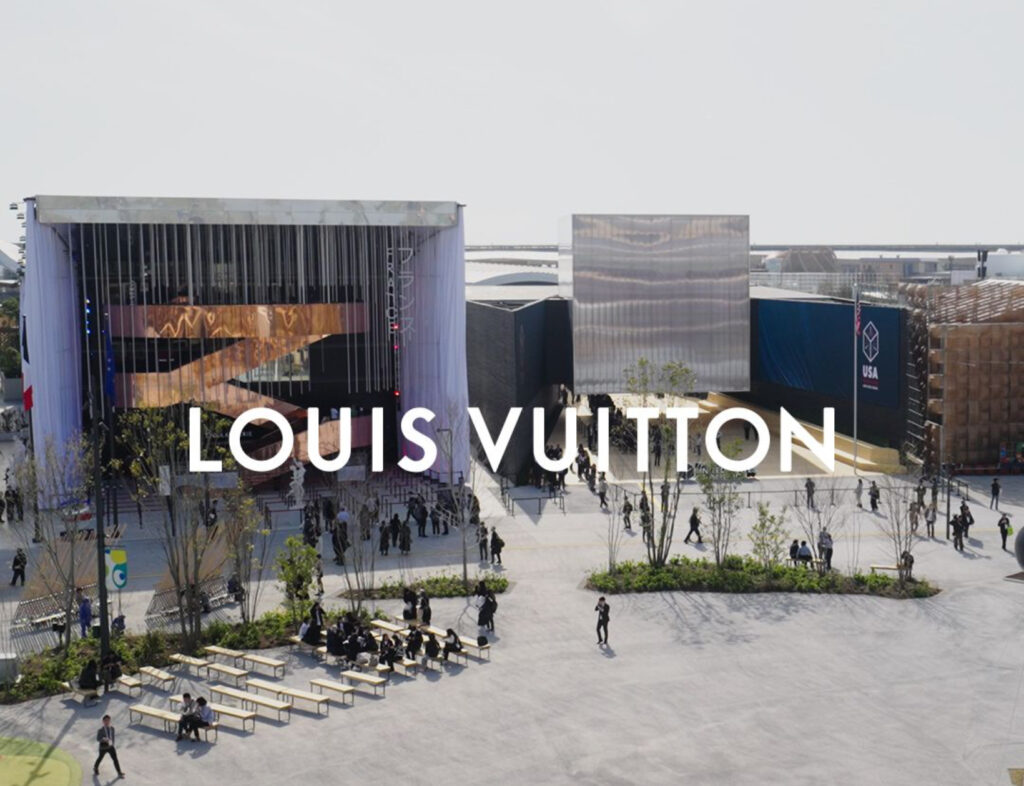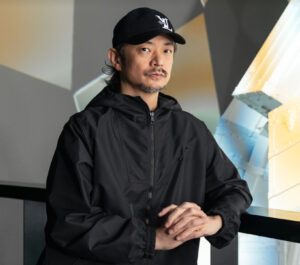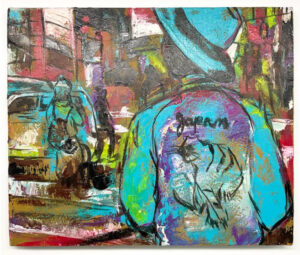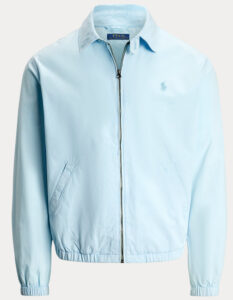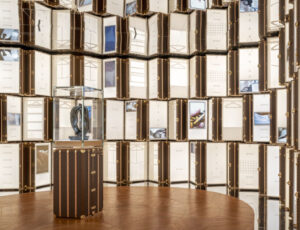
In a pavilion where light bends around stories and memory inhabits matter, Louis Vuitton has erected more than an exhibition at the World Expo 2025 Osaka Kansai—it has conjured a shrine. Co-created with visionary Japanese architect Shohei Shigematsu of OMA and nestled within the French Pavilion, the Maison’s display at this international event is not a mere branding showcase. Rather, it is a dual declaration: one of reverence for the Japanese aesthetic sensibility and another, of enduring fidelity to the art of savoir-faire.
Sponsored in part by LVMH, the French Pavilion seeks to highlight the nation’s ingenuity, innovation, and global cultural entanglements. But Louis Vuitton’s contribution narrows this scope with poetic precision. It is here, in a sculptural embrace of past and present, that we are reminded: the trunk is not just a container of things, but a vessel of values, voyages, and vision. Through two rooms—each choreographed with conceptual force and emotional subtlety—Louis Vuitton reaffirms its deepest truths.
Room One: A Cathedral of Craft
Upon entering the pavilion’s first chamber, visitors are met with a dramatic, reverent stillness. At the room’s heart, Auguste Rodin’s 1908 masterpiece The Cathedral anchors the space, a sculpture of two right hands—elongated, attenuated, almost praying—grazing each other mid-air. This work, long interpreted as a meditation on empathy and spiritual coalescence, becomes here a metaphorical spine for Louis Vuitton’s century-spanning devotion to craftsmanship.
Surrounding Rodin’s sculpture are 84 Wardrobe trunks, arrayed not merely as luggage but as reliquaries. Each trunk, a feat of artisanal expertise, seems to whisper stories of transcontinental voyages, of ateliers humming with quiet precision, of time stitched into leather and steel. The symmetry of their arrangement evokes the cloisters of medieval cathedrals, each trunk standing as a pillar of craft, history, and continuity. This is not just a visual display—it is a tactile archive, a leather-bound biography of human movement and meticulous creation.
Shohei Shigematsu’s architectural grammar lends further depth. The room itself is not static; it breathes. Light, entering in narrow slits and then cascading in warm bursts, dances across the brass latches and monogrammed canvas of the trunks. Each surface reacts like skin, glinting with heritage, with memory. The design’s restraint is deliberate, channeling the Japanese principle of ma—the space between things—as a way to invoke silence, patience, and attention.
Within this first room, the synergy between France’s sculptural legacy and Japan’s spatial poetics reveals itself as more than curatorial coincidence. It is communion. The result is deeply affecting—a sanctum where craftsmanship becomes spiritual language.
Room Two: The Trunk Sphere and the Sound of Dreaming
If the first room is a cathedral, the second is a cosmos. Here, Louis Vuitton lifts visitors out of earthly nostalgia and into something mythic, digital, and immersive. The installation’s centerpiece, the “Trunk Sphere,” is a suspended architectural illusion: a constellation of trunks configured in a spherical geometry, radiating from a central point like a planet that has chosen Vuitton’s DNA as its elemental code.
Projected onto and within this sphere is a multi-sensory world animated by the sound and visual work of Daito Manabe—Japanese artist, coder, and sonic experimentalist. Known for weaving code with choreography, Manabe constructs an atmospheric score that drifts between synthetic wind, modulated vocals, and rhythmic pulses, echoing footsteps across distant lacquered floors. His visual design responds in real time to visitor proximity and motion, creating a reactive installation that folds the audience into its dreaming structure.
Here, the heritage trunk becomes not just a symbol of journey but of metamorphosis. Visitors are invited to walk around, beneath, and within the sphere, activating layers of sound and image as they move. Geometric forms ripple like echoes; ambient light swells in sync with sonic modulation. The installation becomes less an object than an event—fluid, ephemeral, and living.
There is an unmistakable tenderness in this second room’s futurism. Rather than adopting the cold vocabulary of tech exhibitionism, Louis Vuitton and Manabe have conjured a soft future—one where emotion, craft, and technology coexist in harmony. The trunk, once tethered to analog travel, now levitates as a metaphor for imaginative transit. We are no longer going places; we are becoming them.
Savoir-Faire in the Age of Spectacle
Louis Vuitton’s decision to center its pavilion narrative around the trunk—its oldest, most iconic product—feels not nostalgic but urgent. In a world teetering on the edges of hyper-digital speed and post-authentic commodification, the trunk endures as an artifact of slow mastery. It is both symbol and praxis. And in Japan, a land where artisanal reverence runs deep, the trunk finds a kindred home.
The timing is significant. Expo 2025, with its overarching theme “Designing Future Society for Our Lives,” invites exhibitors to speculate not just on what’s next, but on what’s worth preserving. Louis Vuitton responds with a quiet refusal to abandon the handmade, the durable, the poetic. The Maison suggests that the future may, paradoxically, belong to the past—not in regression, but in reanimation.
In this context, Shohei Shigematsu’s architectural choreography is vital. A longtime collaborator of OMA and a master of conceptual minimalism, Shigematsu has often explored the porous boundaries between structure and storytelling. His work at the French Pavilion is no exception. The two-room progression—first grounded in material solemnity, then lifted into multisensory reverie—mimics the ritual of travel itself: packing, leaving, transforming.
It is no accident that the visitor experience feels narrative in design. The structure unfolds like a novel: Part One, a reverent prelude to mastery. Part Two, an open-ended dream. In both, the protagonist is not Louis Vuitton per se, but the idea of enduring beauty.
Franco-Japanese Dialogue as Living Culture
There’s something deeply reciprocal in Louis Vuitton’s homage to Japan. While the Maison has long drawn inspiration from Japanese design philosophies—from the wabi-sabi humility of imperfection to the kintsugi-like reverence for repair—this installation reverses the gaze. It is less about what Japan has given Vuitton, and more about what Vuitton now offers back: a gesture of respect, of alignment, of shared aesthetic ethics.
This is evident not just in spatial choices, but in collaborative dynamics. Shohei Shigematsu and Daito Manabe are not merely decorators of Vuitton’s vision—they are co-authors. Their contributions ensure that the work transcends Western exhibition logic. Instead of imposing an identity, the installation unfolds like a tea ceremony—measured, deliberate, intimate.
The result is a moment of cultural osmosis. France does not perform its grandeur here; it listens. Japan, in turn, does not exhibit its tropes, but its subtle gravitational pull. The Wardrobe trunks, though French in origin, begin to feel at home among the hush of tatami references and coded light. They become, like all great vessels, transformed by where they are taken.
Material Memory and Immaterial Futures
One leaves the Louis Vuitton installation at Expo 2025 not with the memory of objects, but with the impression of sensation. The feel of brass hinges under shadowed light. The sonic blur of Manabe’s score murmuring like wind over lacquer. The scent of oiled leather and lacquered wood suspended in cooled air. It is a museum without glass. An archive without silence.
And yet, within this sensory feast lies a subtle provocation. In highlighting the artisanal, Vuitton also exposes its rarity. How many things, in today’s world, are built to last a century? How many objects do we pack with memory rather than trend? The trunk, in all its grounded opulence, becomes an ethical challenge.
What if luxury was not about price, but patience? What if we measured value by longevity rather than newness? These are not mere philosophical musings—they are commercial implications. Louis Vuitton is staking its identity not in fashion’s churn, but in the eternal return of care.
Impression
At the World Expo 2025 Osaka Kansai, the Louis Vuitton pavilion offers not just a brand experience, but a worldview. In collaboration with Shohei Shigematsu and Daito Manabe, the Maison has rendered something rare in the spectacle-laden ecosystem of global exhibitions: intimacy. Through a dialogue of trunk and hand, sound and light, France and Japan, past and present, Louis Vuitton dares to slow time.
Visitors do not exit with products; they exit with reverence. For craftsmanship. For collaboration. For the quiet resilience of beauty.
And in that, Louis Vuitton has achieved what all great journeys strive for—not arrival, but transformation.
No comments yet.

